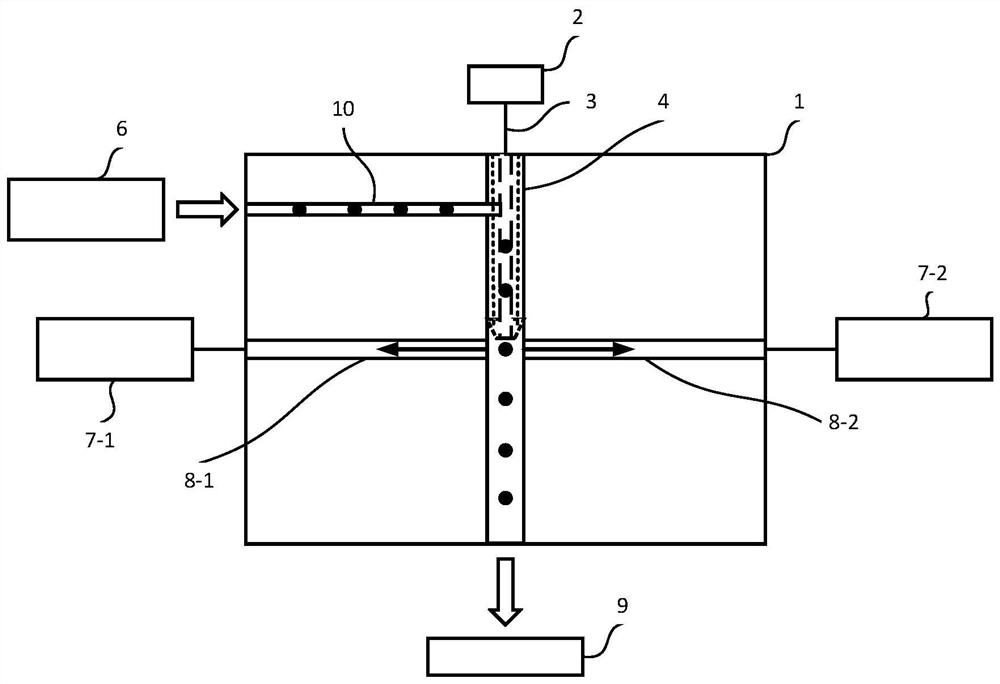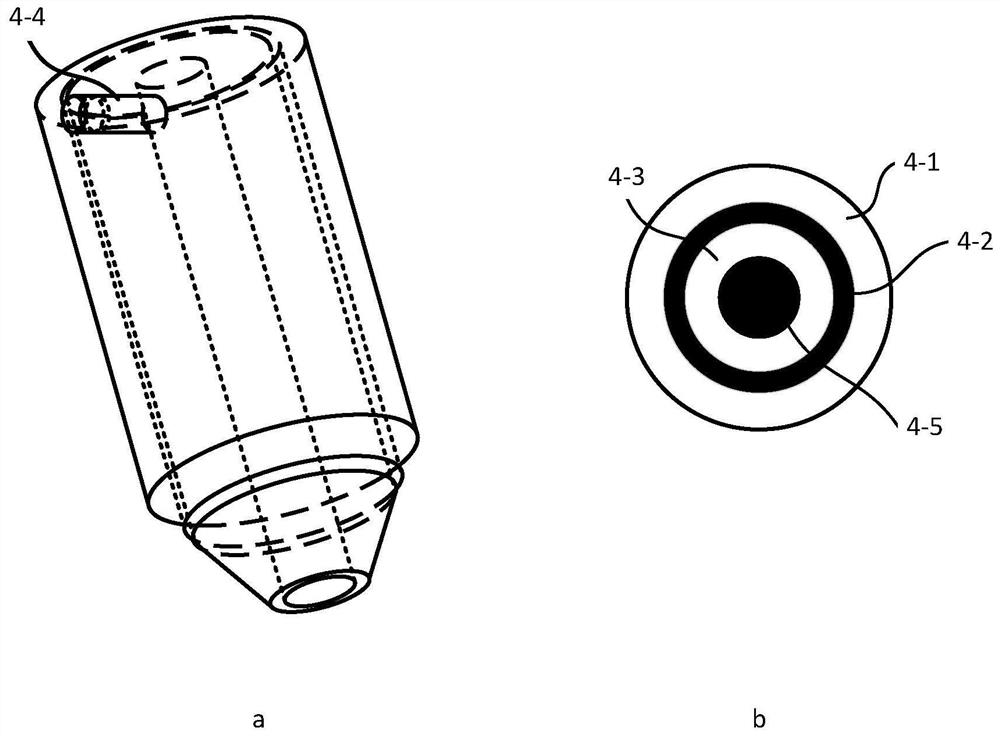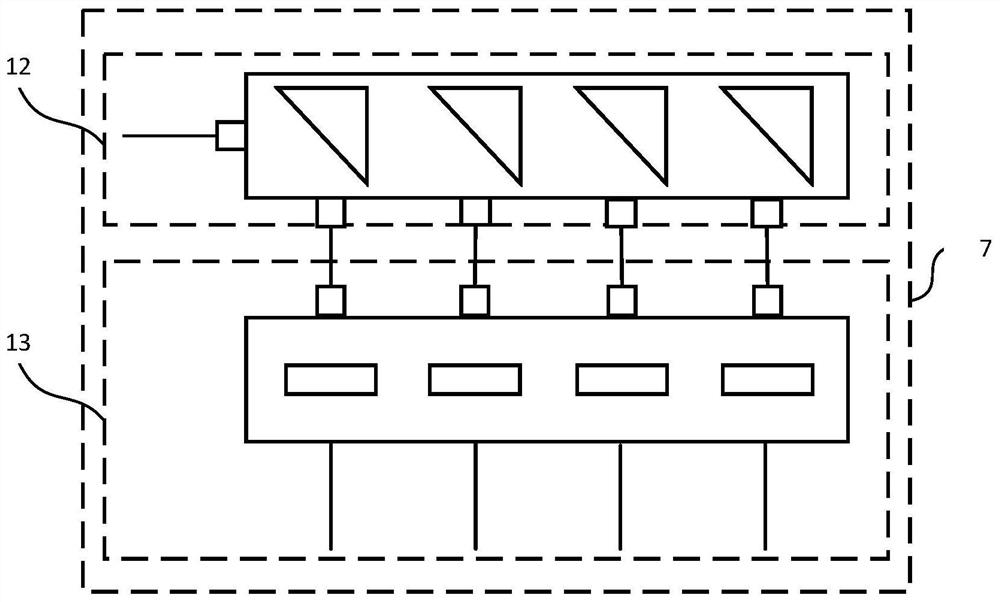Improved flow cytometer based on optical fiber integrated micro-fluidic chip
A flow cytometer and microfluidic chip technology, applied in the field of cell detection and analysis, can solve the problems of limiting the number of objective lenses used and optical path integration, high requirements for optical path space and stability, complex optical path and spatial structure, etc. Various methods, rich design diversity, and various effects of materials
- Summary
- Abstract
- Description
- Claims
- Application Information
AI Technical Summary
Problems solved by technology
Method used
Image
Examples
Embodiment 1
[0035] Such as figure 1 Shown is a system diagram of an improved fiber-integrated microfluidic chip-based flow cytometer. It is composed of five modules: optical fiber integrated microfluidic chip 1, light source 2, fluid control system 6, photoelectric detection system 7, and waste liquid collection system 9. In the system, the fluid control system 6 controls the cell sample and the sheath fluid to form a single cell flow, which flows into the cell flow conduit 10 of the microfluidic chip 1 , and the cell flow conduit 10 is connected with the hollow ring-core optical fiber 4 . The hollow ring-core fiber 4 is connected with the fiber 3 to introduce the excitation light of the light source 2, and the connection mode between the hollow ring-core fiber 4 and the fiber 3 can be in the form of a coupler, such as Figure 8As shown in (a), it can also be in the form of core alignment, such as Figure 8 (b) shown. The hollow ring-core optical fiber 4 uses its own hollow part 4-5 as...
Embodiment 2
[0039] FITC and APC-Cy7 were selected as the markers of cells in the single-cell flow, and the wavelengths of the excitation light were 488nm and 635nm, and the wavelengths of the excited light generated were 530nm and 780nm, respectively.
[0040] The light sources 2 - 1 and 2 - 2 are laser light sources of 488nm and 635nm respectively. The light sources are combined by a wavelength division multiplexer 14 , and then transmitted to the hollow ring-core optical fiber 4 via the optical fiber 3 . The cells 11 in the cell flow generate scattered light after being irradiated, and the scattered light is collected by the scattered light collecting optical fibers 8-1 and 8-2, and transmitted to the photoelectric detection systems 7-1 and 7-2 respectively. The scattered light includes light of four wavelengths in total, excitation light with wavelengths of 488nm and 635nm, and excited light with wavelengths of 530nm and 780nm. Take the photoelectric detection system 7-2 as an example ...
PUM
 Login to View More
Login to View More Abstract
Description
Claims
Application Information
 Login to View More
Login to View More - R&D
- Intellectual Property
- Life Sciences
- Materials
- Tech Scout
- Unparalleled Data Quality
- Higher Quality Content
- 60% Fewer Hallucinations
Browse by: Latest US Patents, China's latest patents, Technical Efficacy Thesaurus, Application Domain, Technology Topic, Popular Technical Reports.
© 2025 PatSnap. All rights reserved.Legal|Privacy policy|Modern Slavery Act Transparency Statement|Sitemap|About US| Contact US: help@patsnap.com



